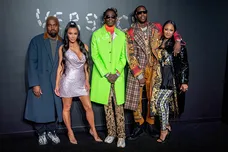Just days ago, The New York Times released an article that revealed the lack of diversity at Adidas’ North American headquarters in Portland, Oregon. The exposé stated that of the company's 340 vice presidents internationally, there are only three that are black. The head office in North America houses 1,700 employees and of that number, 75 of them are black. Adidas often uses celebrities of color to promote their brand, so many believed that the lack of black employees contradicted what they showcased in their campaigns.
"Two black employees said they had been referred to with a common racist slur by white co-workers, one verbally and one in a text message seen by The Times," the article stated. "In both instances, the people believed the slur was intended as a joke, which they felt only highlighted the company’s skewed perspective on race."
Adidas has issued a response to The New York Times article by issuing a statement to WWD. The company wrote:
'We are committed to fostering a respectful, equitable, and inclusive environment for all Adidas employees around the world. It’s crucial that we have and support a diverse workforce that represents a variety of ideas, strengths, interests and backgrounds and that we promote an open culture where all of our people can fully contribute. We value all of our employees, are stronger because of their unique perspectives and are dedicated to achieving greater diversity at every level of the company.
“We actively evaluate and seek to strengthen our programs and policies to ensure we are recruiting, retaining and advancing a diverse team. Recently, we have expanded our Diversity and Inclusion team in North America to focus on underrepresented communities in our workforce across the talent lifecycle; and we conduct ongoing workplace inclusion education and training for employees across North America. Our North American diversity strategy also includes programs to help bring new employees from diverse backgrounds to positions at the company’s corporate headquarters. While we have made progress in these areas, we recognize there is much more to be done, and we are committed to doing it.”







